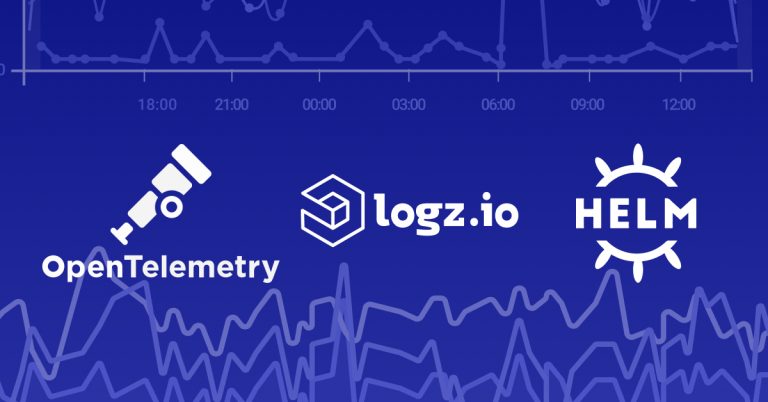
Grappling with a Nightmare on Helm Street
October 31, 2023

Do you find yourself lying awake late at night, worried that your greatest observability fears will materialize as one of the most horrific specters of Kubernetes-driven chaos reaches up through your mattress to consume your very soul?
Even as your mind races and you wonder just who that creepy character sneaking around the metaphysical boiler room of your waking DevOps dreams may be – and why he seems so intent on wreaking havoc across your most important clusters, nodes and pods – know this: you are not alone.
Back in the real world we’ve all become increasingly familiarized with and dependent on Helm since it was introduced at the inaugural KubeCon back in 2015, tapping into its critical capabilities to help automate the Kubernetes applications lifecycle.
However, the reality is this powerful capability for package management that enables developers to define, install and upgrade complex Kubernetes applications can be daunting…even frightening when left to its own devices.
Has the promise of Helm’s simple, consistent approach to managing K8s environments evolved into an unexpected nightmare for your engineering teams? Has its unrelenting complexity crept into day-to-day troubleshooting to the extent that it is now stalking your every decision?
Let’s pull on our trademark striped sweaters and filthy fedoras and take a closer look at some of the Helm horrors that can stalk one’s soul when it spirals out of control.
It’s a Nightmare on Helm Street!
Complexity is a Creep
When considering all the incessant ghouls that love to slither their implacable claws into our cloud environments, few are as persistent and alarming as the unwavering apparition that is complexity. We seemingly gripe about the frights of data overload and an overwhelming inability to maintain perspective into our systems as it relates to their spiraling abstraction, ephemeral natural and plain old sprawl, across the board.
Perhaps complexity itself is the primary hobgoblin of our existence?
When it comes to unmasking the plight of Helm-related issues to this end, there’s no shortage of alarming elements to consider, including:
- Vampirish Version Control: Lacking the ability to maintain proper version control for Helm charts can create a spine-chilling scenario. When this enigma arises, ambiguity may reign, and the notion of reproducing existing deployments — a critical practice of working with K8s applications — grows from a straightforward process into a never ending spiral of chasing your tail. Forget about traceability, you’re lost in the maze of convolution.
- Morbid Misconfiguration: A veritable night terror for many K8s-addled teams, Helm misconfiguration can trigger dumbfounding deployment issues that could even result in ghoulishly unexpected behaviors. Improperly invoked Helm values or template files can leave you fumbling around in the dark as you try to understand what’s gone off the rails in your ecosystem. Good luck accelerating the pace of your deployments when misconfigurations start spiraling out of control!
- Devilsome Deployment Status: Ah, the hideous night huntsman of abstraction! For all its utility, Helm throws a cloak of ambiguity between K8s and its users, obscuring deployment status based on its ignorance of the actual state of involved resources. Now, a simple slither of the hands in making an otherwise innocuous change to said resources results not only in an imperiled pod, but everything might still appear capable when you go looking for the related problem. That’s right, you’ve done yourself in without intending.
- Cackling Chart Compatibility: Like so many elements of our complex cloud applications architectures, Helm chart interdependency – traversing a veritable spider’s web of various Kubernetes versions – can generate massive headaches when they end up incompatible. A rising torrent of misaligned charts and services then ensues, resigning you to a tantrum of troubleshooting and unnerving cyclical suffering strewn with the potential for yet more failed deployments and unpredictable outcomes. Egads!
- Possessed Permissions: Is there any area of the looming cloud, or software in general, where matters of improperly managed or opaque permissions don’t haunt our very existence? Helm is no outlier in this frightful fashion. Without the right Role-Based Access Control (RBAC) settings… boom, you might just end up with some unforeseen shadow crawling around in your Helm deployments. You thought that you locked the door, but that unplanned rollback just found you screaming into the void.
Fear Not: There’s Hope to Survive on Helm Street
While these five Freddy Krueger-like claws of potential Helm horrors may seem daunting, the reality is that you can crawl out of these bad dreams, turn on the lights and move forward with renewed optimism that the world outside need not be so terrifying.
Each of these potential K8s calamities can be addressed with their own best practices that can have you back on your feet, ready to mop off those night sweats and climb back into the sunlight of a brighter day with fewer troubleshooting tortures and faith that humanity has been restored.
Of course, even when haunting Helm headstones continue to crop up in your environments, there is the mindset of invoking the effective blowtorch of full stack observability to help you wipe out related problems and relieve you from unrelenting investigation.
In fact, we here at Logz.io feel that our unified Kubernetes 360 solution, which uniquely brings together the insights and drill down capabilities needed to unearth your worst Helm horrors, is a great way of debunking all these related fears.
If you’re interested in giving that a shot, start a Logz.io free trial today, it’s never too late!
Happy Halloween. 🙂




